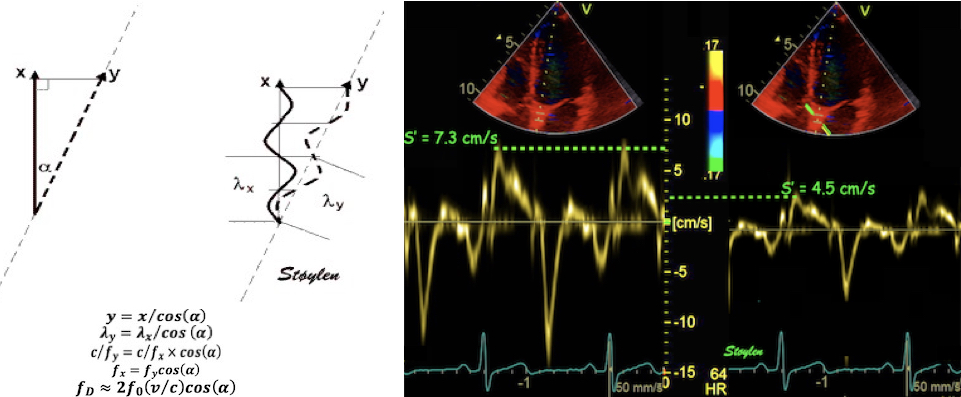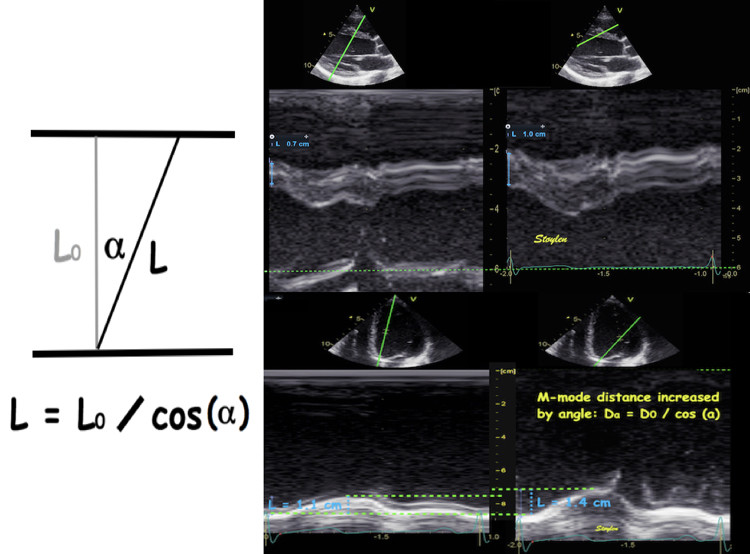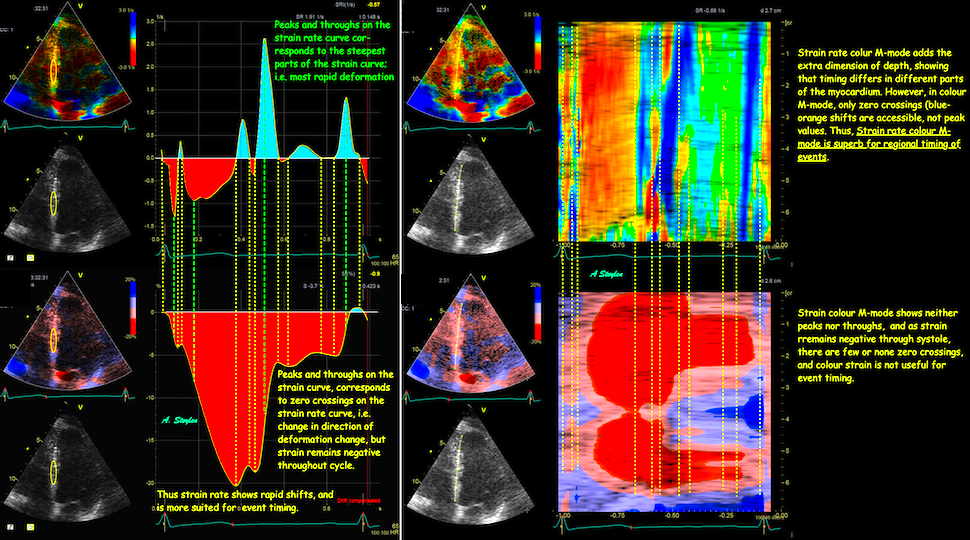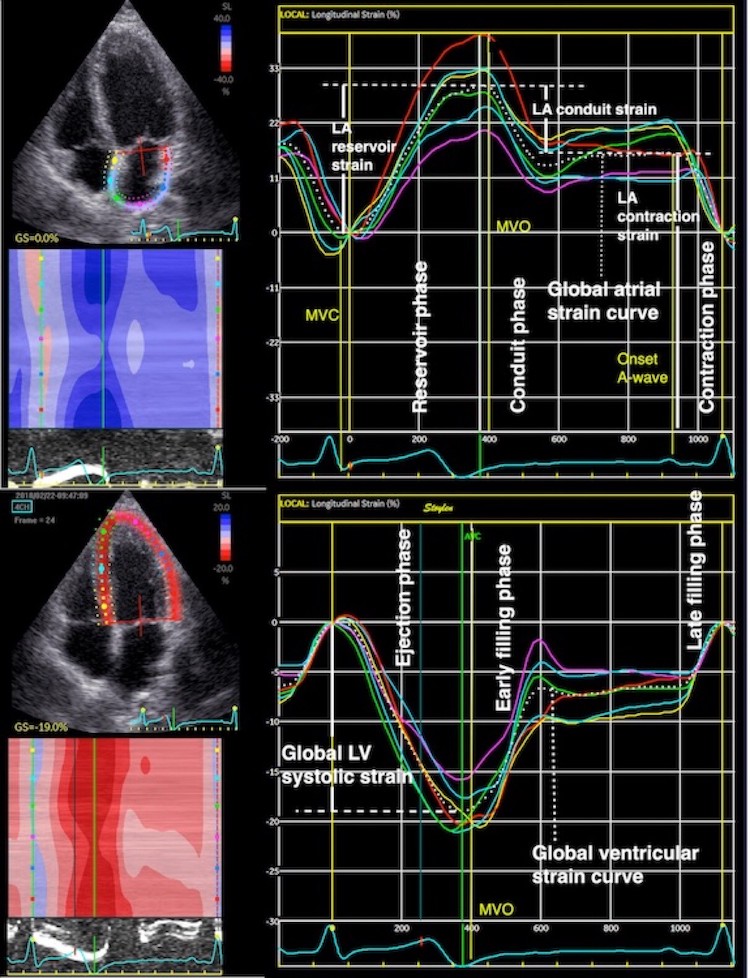
Faculty of Medicine and Health Sciences
Department of Circulation and medical imaging

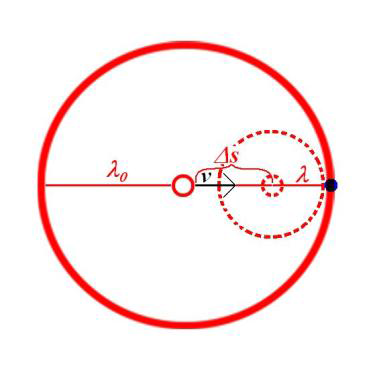 |
|
| The Doppler
effect for a moving source and a stationary
observer. In the time the original wave has moved
a wavelength |
The Doppler effect for
a stationary wave source and a moving observer. In
the time the wave has moved the distance |
